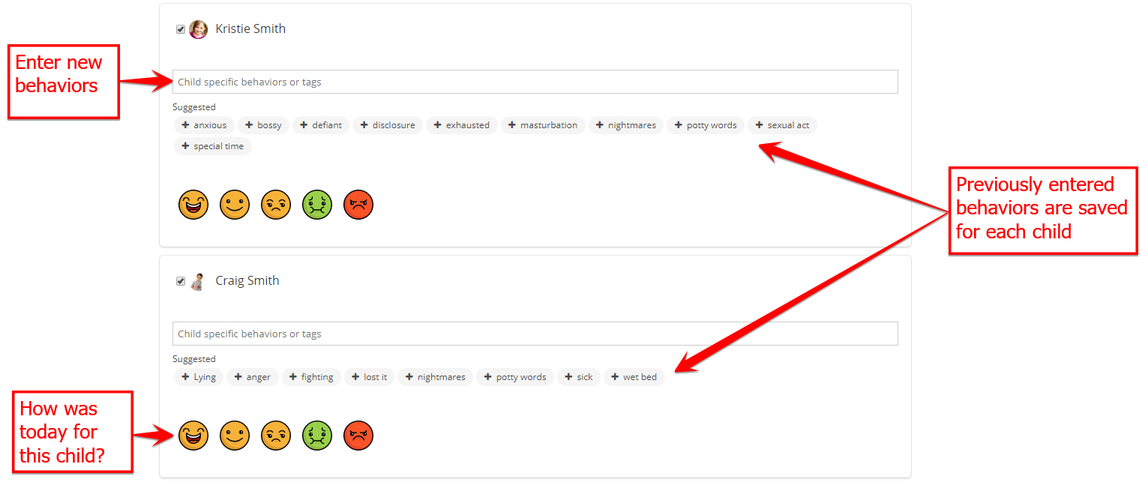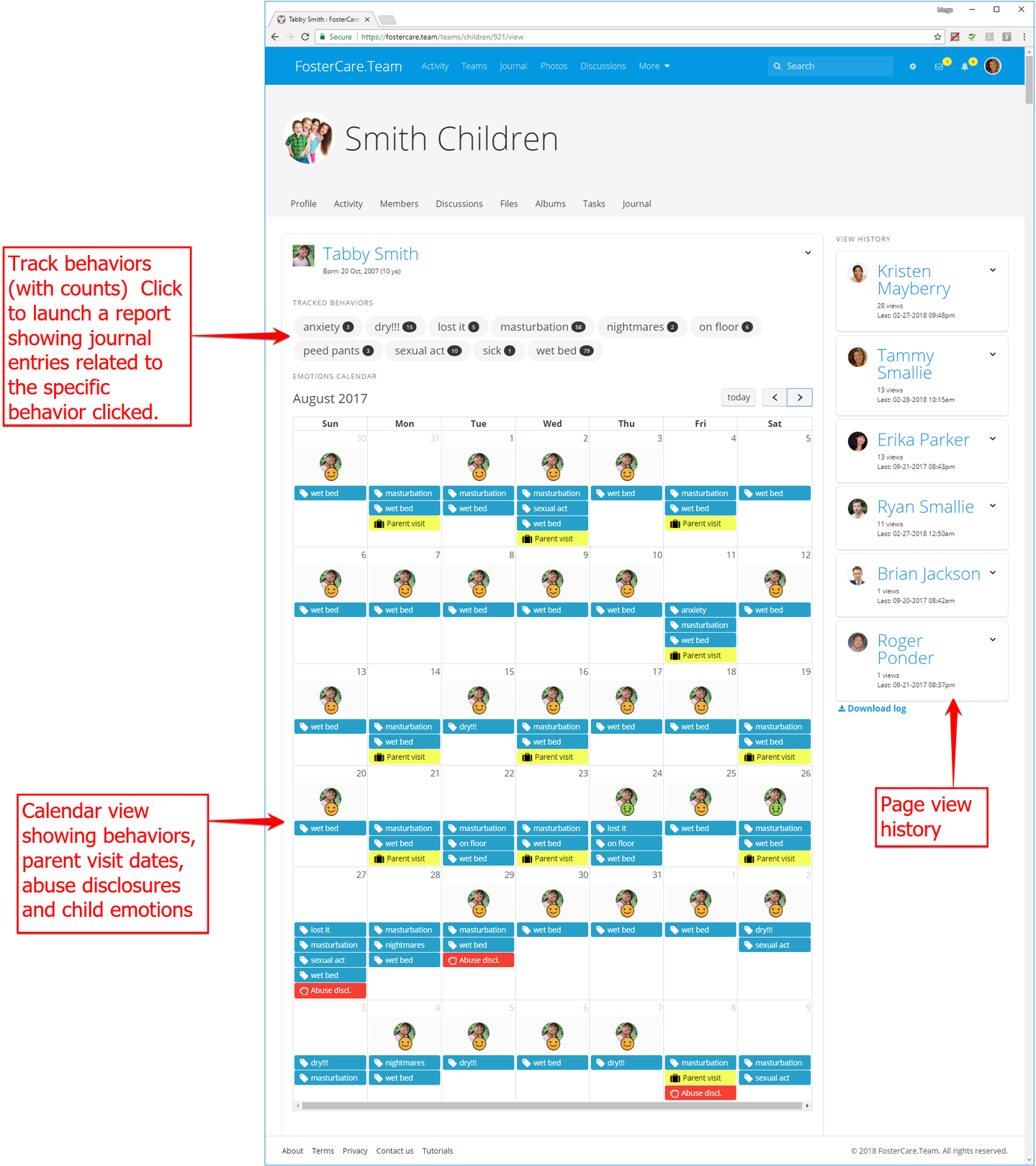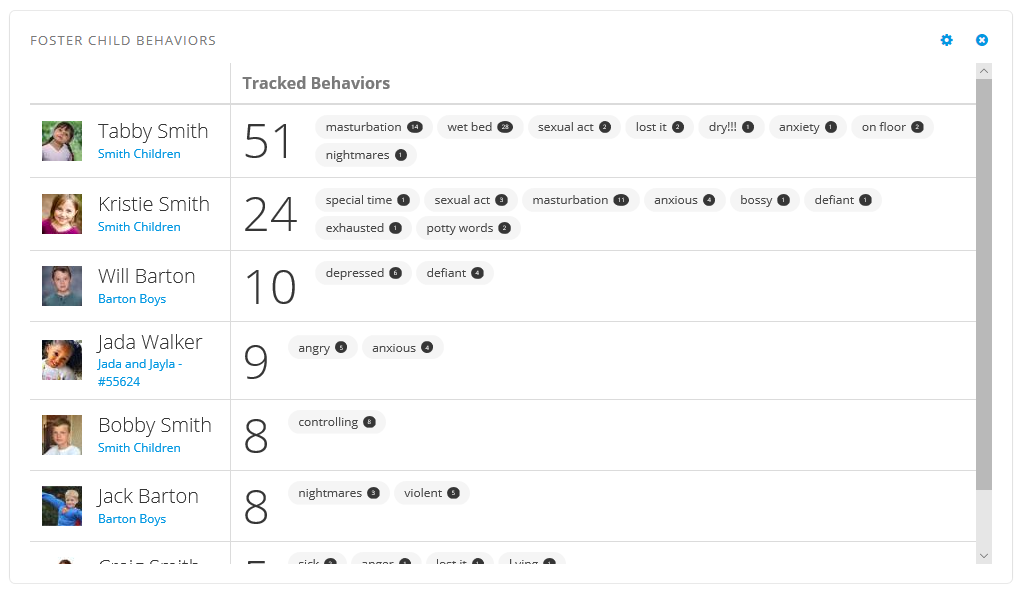Log in
Behavior Tracking
If you can't measure it, it doesn't exist. - Unknown
Behaviors
We make child behavior tracking (and reporting) easy and informative. Behaviors are primarily associated with journal entries, but you can also track behaviors by child in the discussion module, task module and photo albums module as well.
Behaviors are tracked by child. The system remembers which behaviors you are tracking for which child and presents them in a list. Tracked behaviors are displayed in journal entries and can even be displayed in a calendar format where you can see how they relate to parent visits or any other date related trigger.

The saved behaviors for a child can then be displayed in a calendar format. You can also click on a behavior and the system will show you all journal entries, discussion topics and photo albums associated with that child and that behavior. Our counselors found this aspect of the system to be very helpful.

Additionally, behaviors are visible to agency caseworkers and their supervisors in their agency dashboard. Our platform gives visibility to the children who are struggling the most in their placements, allowing caseworkers and supervisors to provide extra support and interventions as needed. Like everything we do, the behaviors on the dashboard are team-centric, meaning a caseworker can only see the children they oversee. Likewise, a supervisor can only see the behaviors for the children their caseworkers oversee.

Emotions
Additionally, in the journal entry module, we track emotions. There are two main reasons we track emotions. One is because we can use them to send email alerts to key members of the foster care team. The second is because they are very useful in a foster care agency dashboard. A dashboard is used to give caseworkers and supervisors a high-level view of the foster children, foster parents and foster homes they are responsible for. We can use algorithms to analyze emotions and highlight any foster parent or foster child who is in need of additional support.
Emotions are an optional feature of a foster care team. Emotions can be tracked at three levels:
![]() 1) The foster home. The emotion icons are used to answer this question: How is this foster home functioning? This could cover things like the stress levels in the home, the relationships between birth children and foster children or just an overall indicator of the harmony (or lack thereof) in the home.
1) The foster home. The emotion icons are used to answer this question: How is this foster home functioning? This could cover things like the stress levels in the home, the relationships between birth children and foster children or just an overall indicator of the harmony (or lack thereof) in the home.
2) The journal entry author. Typically the journal entry author will be the foster parent. This emotional level was added to our system at the request of counselors. They felt that often times the foster parents' emotional well being was overlooked as attention was directed towards the foster children. The emotion icons allow a foster parent to get real and just say how they are doing. No one expects perfection. If you're really stressed out, your caseworker needs to know about it so they can help, and put some supports in place for you. Sometimes it's hard to spell out exactly what is going on, but a simple click on an emoji can get the message across. Well supported foster parents are in the best interest of all parties - foster children, foster families, and foster care agencies.
3) Finally, emotions are tracked at the foster child level. They answer the question: How was today for this child? Just as behaviors are tracked over time, emotions tracked over time can help a foster parent and caseworker make sure a foster child is getting all of the interventions they need to receive the highest quality of care.
Testimonials
... But above all I liked that behaviors were tracked. By having a foster parent track behaviors, I can more accurately correlate the behaviors to an antecedent. Foster parents can often tell us behaviors are worse after some visits but with journaling I feel we have a more unbiased picture of what could be leading to stress in children.
Brittany S.
Foster Care Specialist
I am especially fond of the capacity to look at behavior over time as it allows me the opportunity to determine if there are triggers on a particular day or in a particular setting.
Dr. Carmen B.
Licensed Psychologist, RPT-S